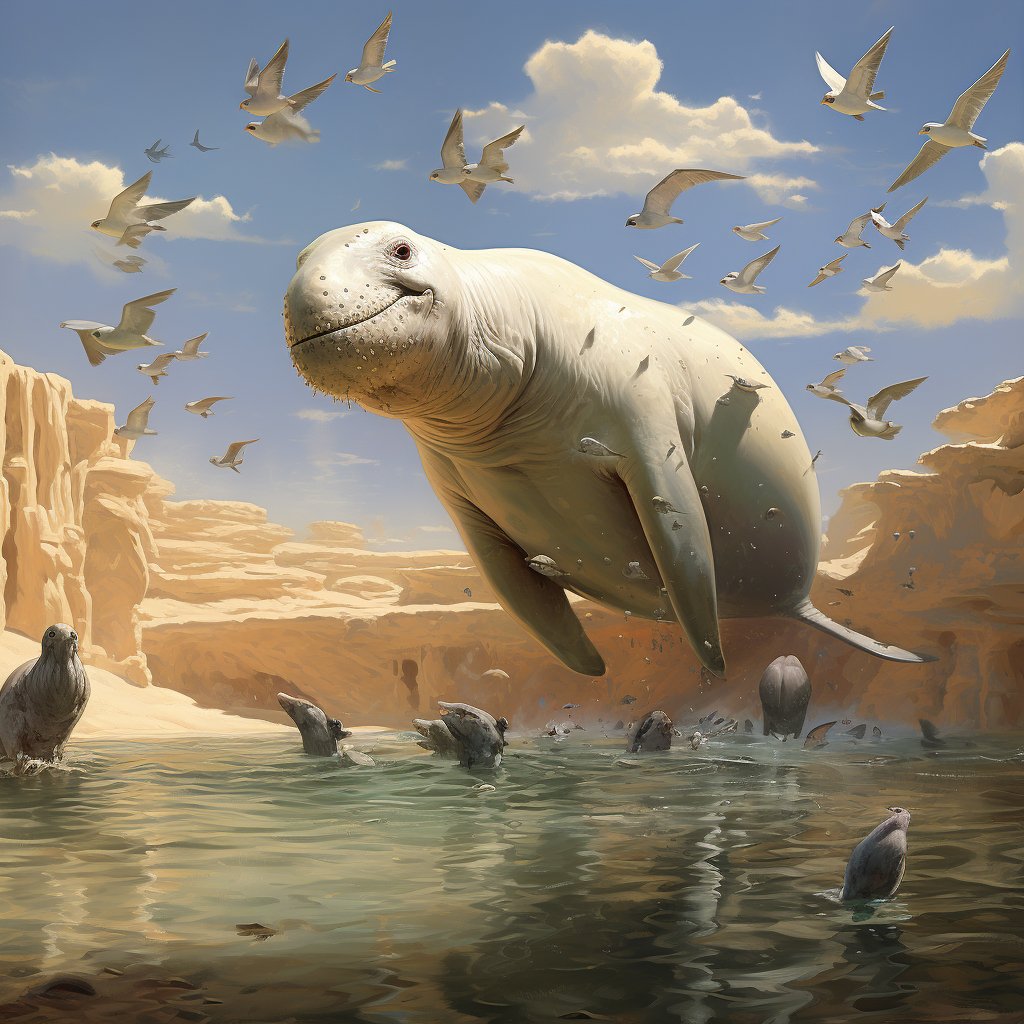
Exploring Bahrain’s Diverse Habitats and Indigenous Species
Nestled in the Persian Gulf, the Kingdom of Bahrain, typically recognized for its rich cultural history and economic achievements, is also a land brimming with diverse and unique ecosystems. This initial segment of our exploration of Bahrain’s natural environment highlights the island’s variety of habitats, each hosting a range of indigenous species that contribute to its rich ecological tapestry.

The Marine Ecosystem: A Rich Underwater Realm
Bahrain’s surrounding waters are not just expanses of blue but are thriving with marine life, making them an integral part of the island’s ecological identity. The Arabian Gulf, with its warm and shallow waters, is home to a vibrant coral reef system. These reefs are bustling with a variety of marine species, ranging from small, colorful reef fish to larger sea creatures like the endangered Dugong, also known as the sea cow. These gentle giants are a unique feature of Bahrain’s marine life, with the waters around the island being one of their last remaining sanctuaries in the world. The health and diversity of these coral ecosystems are not just important for the marine species they support; they also play a vital role in the environmental well-being of the region.

The Desert and Inland Fauna: Life in Arid Climates
In stark contrast to the lush marine environment, Bahrain’s arid desert landscape presents a different set of ecological wonders. The desert here is home to a range of species that have adapted to thrive under extreme conditions. Among these resilient creatures is the Arabian oryx, a symbol of the desert’s beauty and endurance. Once on the brink of extinction, concerted conservation efforts have helped revive its population. These majestic animals, with their striking white coats and long, pointed horns, are now a common sight in Bahrain’s protected areas. Besides the oryx, the Bahraini desert is a habitat for various reptiles and smaller mammals, each adapted to the desert’s challenges and playing a crucial role in maintaining the ecological balance.

Avian Diversity: A Birdwatching Paradise
Bahrain’s strategic location also makes it a critical stopover for migratory birds, adding a dynamic element to its biodiversity. Each year, the island becomes a temporary home to a wide array of bird species, making it a paradise for birdwatchers. The Al Areen Wildlife Park and Reserve, along with the Hawar Islands, are prime spots for observing these avian visitors. From flocks of flamingos that paint the wetlands pink to predatory eagles soaring in the sky, the variety of birds observed here highlights the ecological significance of Bahrain as a resting and nesting ground in these birds’ migratory journeys.

In this exploration of Bahrain’s diverse natural habitats, we see an island that is much more than its urban landscape. The rich marine ecosystems, the resilient desert wildlife, and the migratory birds all contribute to the unique natural heritage of Bahrain. As we turn the page to the next part of our series, we will delve deeper into the lives of specific indigenous species of Bahrain, uncovering the stories of their survival and the conservation efforts to protect these natural inhabitants.

Conservation Efforts and Initiatives in Bahrain
In the final part of our exploration of Bahrain’s wildlife, we turn our attention to the conservation efforts and initiatives that play a crucial role in protecting and sustaining the island’s diverse ecosystems and species. Bahrain’s commitment to conservation highlights the nation’s recognition of the importance of its natural heritage and the need to preserve it for future generations.
National Parks and Protected Areas
Bahrain has established several national parks and protected areas to safeguard its unique habitats and species. The Al Areen Wildlife Park and Reserve, for instance, is not only a sanctuary for indigenous and African wildlife but also plays a significant role in educating the public about conservation. The Hawar Islands, recognized as a Ramsar site of international importance, provide a protected breeding ground for various bird species, including the Socotra Cormorant. These protected areas are crucial in maintaining the biodiversity of the region and serve as a testament to Bahrain’s proactive approach to environmental stewardship.

Marine Conservation and Research
Understanding the critical role of marine ecosystems, Bahrain has invested in marine conservation and research. Efforts include the protection of coral reefs and seagrass beds, which are vital for the survival of many marine species, including the endangered Dugong. Research initiatives, often in collaboration with international organizations, aim to monitor and study the health of these ecosystems, leading to better-informed conservation strategies.
Wildlife Rehabilitation and Breeding Programs
Bahrain also engages in wildlife rehabilitation and breeding programs, particularly for species that are endangered or have faced significant population declines. The successful breeding and reintroduction of the Arabian oryx into protected areas are prime examples of such efforts. These programs not only help in increasing the population of these species but also contribute to the overall ecological balance.

Environmental Education and Community Involvement
Recognizing the importance of community involvement, Bahrain has focused on environmental education as a key aspect of its conservation strategy. Educational programs and initiatives aimed at raising awareness about the importance of preserving natural habitats and species are a regular feature in schools and public spaces. Community involvement in conservation efforts ensures a wider impact and fosters a culture of environmental responsibility.

The conservation efforts and initiatives in Bahrain reflect a deep understanding of the interconnectedness of ecosystems and the importance of maintaining a balance between development and nature. Through dedicated efforts in protecting its natural landscapes and wildlife, Bahrain stands as an example of how even small nations can make significant contributions to global conservation efforts. As we conclude our journey through Bahrain’s natural world, it becomes evident that the nation’s wildlife and conservation initiatives are integral to its identity, offering a glimpse into a future where development coexists harmoniously with nature.
